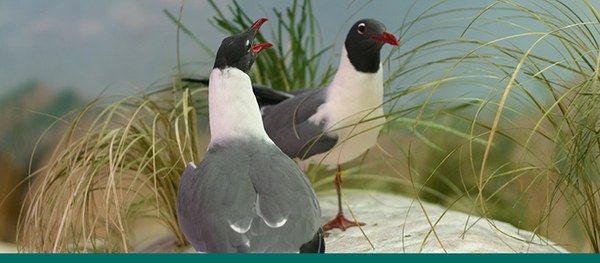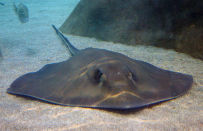Shallows & Shores
Fish, birds and many other animals thrive in this ecosystem at the edge of the ocean.

When Visiting...
- Watch cownose, Southern and Atlantic stingrays glide through an open tank.
- Find live birds patrolling the sandy beach for food.
- Wait for the "splash!" in the Surf Zone tank.
- See how the BP Deepwater Horizon oil spill in 2010 is affecting the Gulf today.

Extending from the coast to the edge of the continental shelf, the shores and shallows are the most diverse and productive areas of the Gulf of Mexico.
Air, Land & Sea
Daily tides, waves, currents and strong winds continually reshape the shoreline. Barrier islands, like Padre Island which is the longest in the world, protect lagoons and beaches from the destructive effects of wind and waves. Animals take advantage of the wide variety of habitats found here.
Life in the Surf
Surf zone animals often employ evasive tactics to cope with the force of waves continually pounding the shoreline. Many clams, crabs and worms live beneath the sand. Crabs wedge into rocky outcrops, while barnacles and anemones cling tightly to hard surfaces. Animals like drum, kingfish and pompano can swim quickly into deeper waters when dangerous waves threaten.
Our Actions Matter
The BP Deepwater Horizon oil spill devastated the Gulf of Mexico in 2010. We can all help prevent similar disasters in the future:
- Use less petroleum. From gasoline to plastics, petroleum is a integral part of our lives. Be mindful of the ways you use petroleum and think about how you can use less today.
- Explore nature with a child. Pass on your love of nature to a child through a hike, an hour birdwatching or another fun outdoor activity. You can help create the next generation of biologists and nature enthusiasts!
- Support restoration and conservation projects. Donate to the New Mexico BioPark Society or other conservation organizations to help wildlife around the world.
